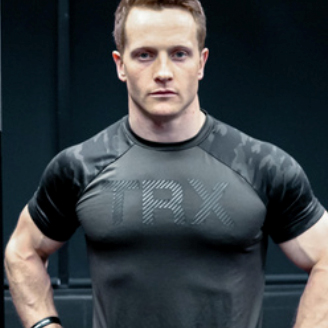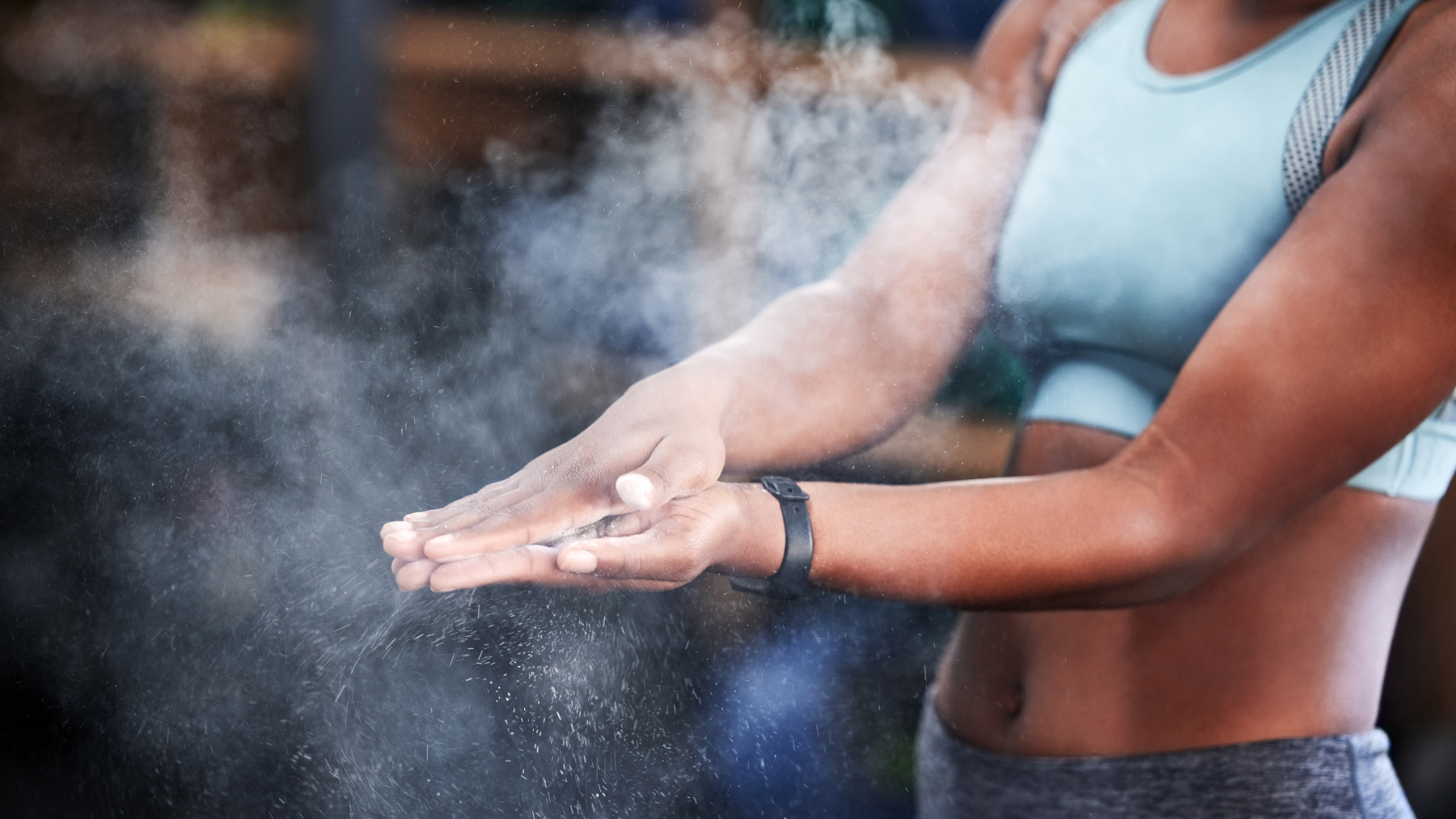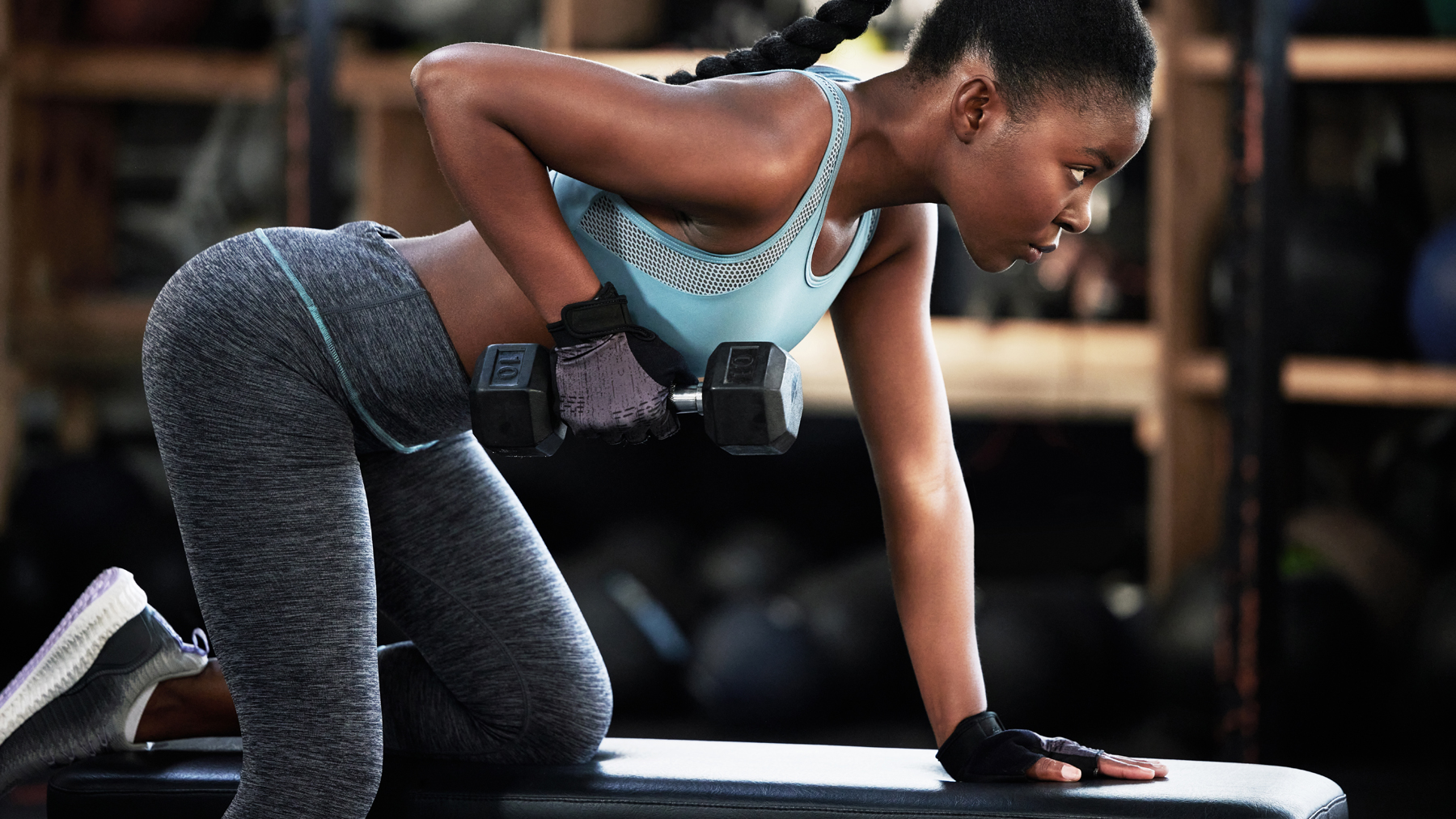
What is high-intensity resistance training? Whether you’re a gym bunny who loves working out every day or someone who reluctantly follows a YouTube exercise video once a week, you’ll have probably heard of high-intensity interval training, or “HIIT” as it’s more commonly known. But what about its less extreme cousin, high-intensity resistance training (HIRT)?
While it’s not quite as popular, HIRT is a similar concept except it combines strength and high-intensity training unlike HIIT, which involves moving from one cardio exercise to the next with short rest breaks in between. Yes, they might both involve dumbbells, but they’re used in different ways. Our best adjustable dumbbells buying guide will help if you’re looking to buy some to use at home.
Still, why would you do a HIRT workout over a HIIT workout? What are the advantages of HIRT and is it good for weight loss? All these questions we will answer in this article, with the help of UK-based PT, TRX trainer, and movement specialist, Tom Cuff-Burnett.

Tom Cuff-Burnett is a former professional rugby player, PT, TRX trainer, and movement specialist. He has more than 12 years of experience across a range of training disciplines, including sports-specific strength and conditioning, barbell/dumbbell/kettlebell technique, group-based training (both in-person and virtual), and specialist TRX. Tom is a self-confessed movement perfectionist with a training philosophy based on educating clients to ‘move better, feel better’.
What exactly is high-intensity resistance training?
Like HIIT, HIRT still focuses on utilizing high-intensity cardio-based exercises, but instead of running around and sweating like a maniac, there’s a greater focus on heavier resistance and/or strength work, according to Cuff-Burnett.
“HIRT is the natural evolution of HIIT, which has gained enormous popularity over the last 20 years, however, can come under criticism for placing an emphasis on speed over safety and technique,” he explains.
“HIRT is different in that it essentially equates to timed, high-volume weightlifting.
An effective HIRT workout, for example, requires an exertion rate that hits a minimum of 80% of your physical capacity on every repetition, he adds.
Start your week with achievable workout ideas, health tips and wellbeing advice in your inbox.
“This results in an intensity that means HIRT workout sessions should (only need to) last around 30 minutes.”

Is high-intensity resistance training good for weight loss?
With the inclusion of heavier bouts of resistance training, there has been evidence to suggest that HIRT also elicits a greater excess post-exercise oxygen consumption (EPOC).
“This means the body’s metabolism and energy expenditure remains elevated for longer, even after they have finished exercising,” explains Cuff-Burnett.
Take a recent study in the National Library of Medicine, for example, which found that shorter HIRT sessions can increase resting energy expenditure (the calories you burn while resting after exercise) to a greater extent than traditional resistant training while also improving fat oxidation (the process of breaking down fat).
While HIRT is less intensive than HIIT when it comes to cardiovascular effort, it is clearly still effective when it comes to shifting those extra pounds.
Does high-intensity resistance training build muscle? If so, how?
So, we know that HIRT works well in helping us to burn fat, but seen as though it involves more weight-based movements, can it help boost muscle growth, too? Cuff-Burnett seems to think so.
“HIRT can be used to build muscle - and lean muscle, at that - as the typical rep ranges for a workout (six-10 reps, for example) fall into the ideal range for muscle building, also known as ‘hypertrophy’,” he explains.
“This type of training focuses on the goal of increasing muscle through using higher repetitions to stimulate an increase in muscle endurance and volume - all of which is a hallmark of HIRT.”

HIIT vs HIRT: which is better and why?
So, the big question is: which workout type wins the battle between HIRT and HIIT? Well, that depends on your goals. If it’s greater muscle definition and size that you’re aiming for, it seems, from what Cuff-Burnett says, that HIRT would be the preferred method. Its use of more weights and higher rep ranges, for one, suggests you’re likely to achieve hypertrophy results.
However, if weight loss is your main focus, then a good old HIIT workout might still have the edge for you, as you’ll find more heart rate-elevating cardio exercises in this type of workout. Although, of course, this all depends on the length of the workout you’re doing, the types of exercises you’ve planned to perform, the set and rep counts, and also the nutrition you’re putting in your body to fuel them.
Still, Cuff-Burnett believes HIRT is a natural progression from the much-lauded HIIT method for most.
“Combining the short bursts of intense cardio exercise with more technical, heavy weightlifting essentially delivers a ‘one-stop-shop’ training solution that covers pretty much all bases,” he says.
The only consideration to make between the two, he adds, is that HIRT will typically require more equipment such as free weights, or some of the best resistance bands, and - in some cases - machines, whereas most HIIT sessions can be performed simply using bodyweight exercises. Or throwing yourself on the floor and back up again at high speed à la burpees.
If you have to make a choice though and aren’t too sure which to go for, Cuff-Burnett would pick HIRT.
“To say one is better than the other might be misleading, but if you have limited time and bandwidth for your training, and have access to some level of gym equipment, the smart money would be to adopt the HIRT method for the best all-around regime,” he says.
Looking for a reliable HIRT routine to get you started? We’ve got just the thing: a high-intensity dumbbell workout that will strengthen your whole body and help build core muscle in just 15 minutes.
Also note that HIRT is an intense way to train, so be sure to focus on your form to get the most from your workout and to avoid injury, a particular concern when working with weights.
Read on to find out more on topics such as; weight loss vs fat loss: what’s the difference? Plus, find out the answer to questions like does metabolism increase with exercise? Or, what are compound exercises? Fit&Well has sourced the answers from various fitness industry experts to get to the bottom of these commonly asked questions.
Lee Bell is a London-based journalist, copywriter, specializing in all things tech and lifestyle. He is also a qualified personal trainer. He started his journalism career a decade ago as a reporter covering the latest gadgets and innovations at tech tabloid The Inquirer. Lee went freelance in 2016 to broaden his expertise, moving into news, reviews and feature writing for a host of national print and online lifestyle titles such as GQ, Forbes, Esquire, Men’s Health, Wired, The Metro, and The Mirror. He has an insatiable appetite for travel, Dharma yoga, and the odd outdoor challenge.

